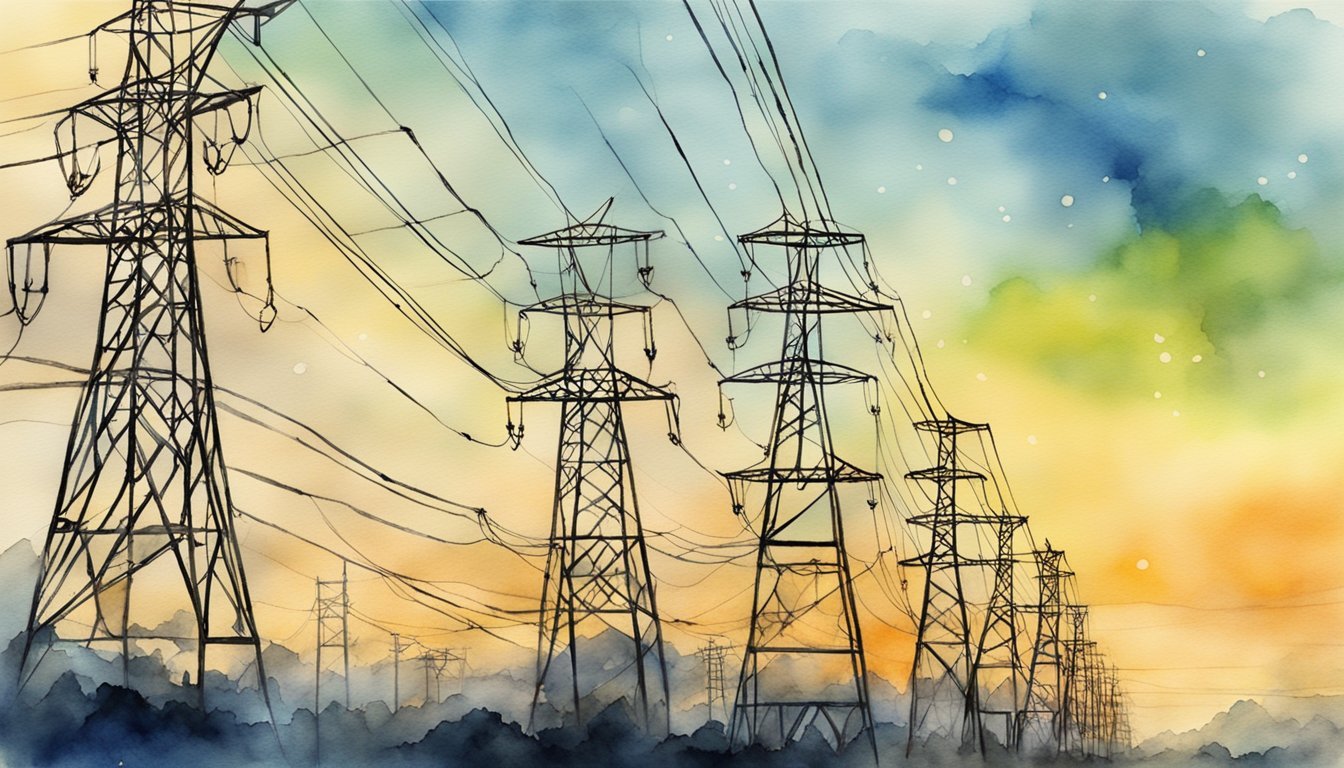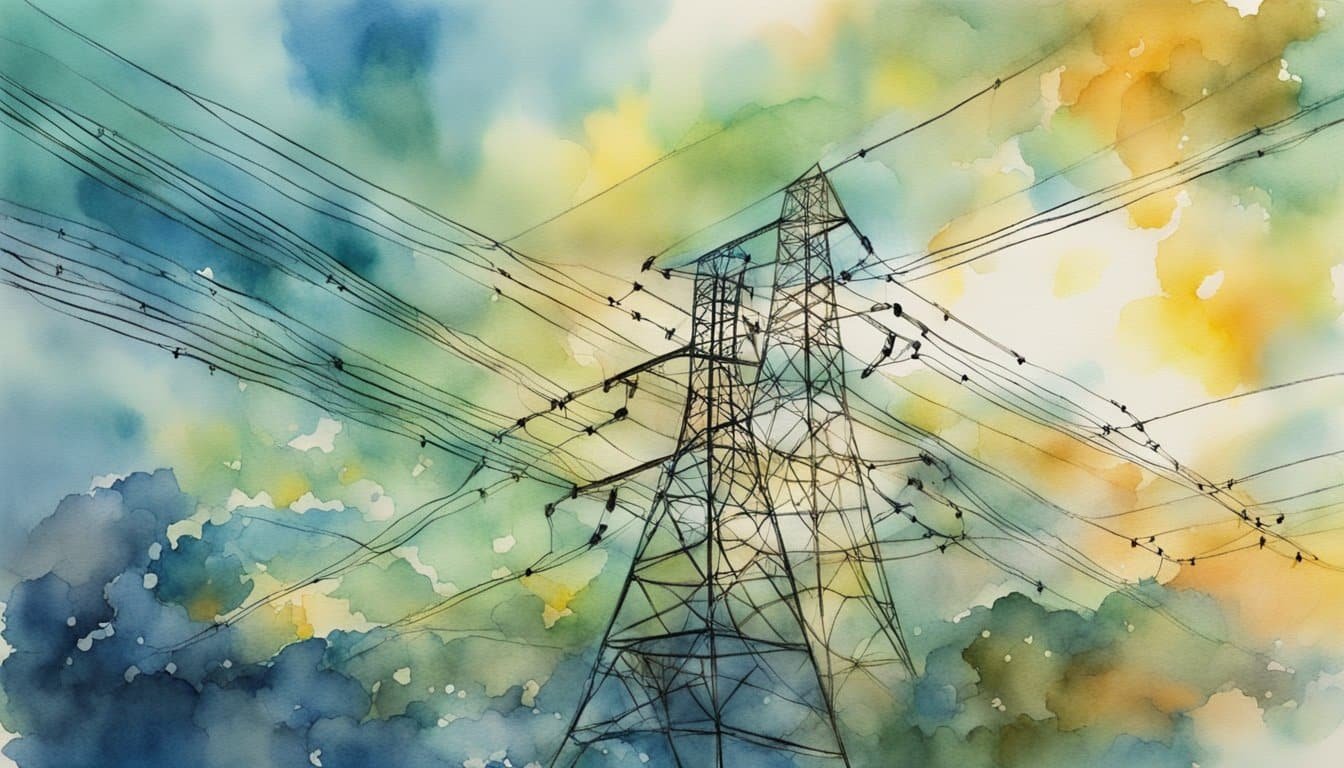Understanding Electricity From Air
Have you ever considered the possibility of the air around you holding the key to clean electricity? It turns out that scientists are tapping into the natural power of air to generate electricity. The concept might sound like something from a sci-fi movie, but it’s real, and it’s being pioneered at the University of Massachusetts.
Electricity from air refers to the innovative technology known as Air-gen or the Air-gen effect, utilizing nanowires and the humidity in the air to produce power. This concept doesn’t rely on the traditional forms of renewable energy like solar or wind. Instead, it captures the energy present in the ambient environment.
Researchers, led by Jun Yao from the aforementioned university, have developed a device leveraging the conductivity of protein nanowires extracted from microorganisms. These nanowires absorb water vapor from the air, which due to a difference in electrical potential, generates a continuous electrical current.
Here’s a bit of the science behind it:
- Air humidity acts as a carrier of charge, with water molecules adsorbing on the surface of the nanowires.
- The nanowires are tuned to link these molecules, and due to the natural electrical conductivity, they kickstart an electric current.
- The Air-gen device converts this moisture-sourced energy into clean electricity, offering a promising alternative to other sustainable energy technologies.
This method of harvesting electricity right from the air we breathe offers a visionary approach to clean energy. It’s not only sustainable but also an omnipresent source, making it a potential game-changer in the hunt for renewable energy solutions. Imagine powering your electronics with the air from your indoor plants!
For those dreaming of a future where our power is sourced sustainably and cleanly, electricity from air presents a thrilling glimpse into a world of innovative and renewable possibilities.
Innovative Technologies and Research

Exploring the cutting-edge domain of electricity generated from air involves delving into a mix of science, engineering, and advanced materials. This section sheds light on the development of pioneering devices and their potential real-world applications.
Development of Air-gen Devices
Scientists have made a groundbreaking leap with the creation of Air-gen devices, leveraging a thin layer of material just a few nanometers thick. This material, when combined with the moisture present in the atmosphere, can generate electricity. Engineers at the University of Massachusetts Amherst tapped into this technology, utilizing electrically conductive protein nanowires from the microorganism Geobacter sulfurreducens. By exploiting the natural charge imbalance that occurs within these nanowires, a significant step has been taken towards sustainable and renewable energy production.
Real-world Applications
The implications of Air-gen technology for energy production are vast, bridging gaps from rainforest environments to the most arid regions. Devices can be scaled up to achieve kilowatt-level power, complementing traditional sources like solar and wind power. The device, being highly adaptable, could someday power everything from sensors for climate change monitoring to medical devices, contributing to a cleaner future with potentially limitless, free electricity.
Challenges and Future Directions

Harnessing electricity from the air presents a novel approach to sustainable energy, merging innovation with nature’s vast resources. Yet, as we move forward, addressing specific challenges and mapping out future directions is crucial for the practical advancement of this exciting field.
Environmental and Scalability Concerns
Capturing electricity from environmental sources like humid air and thunderstorms confronts several ecological and scalability issues. For instance, graphene oxide and polymers, materials holding promise for generating hygroelectricity, must be synthesized in an environment-adaptable manner to minimize impact on ecosystems, including the delicate balance of rainforests and arid regions. The mean free path for such initiatives to become mainstream is riddled with concerns about the unintended creation of man-made clouds or other climatic interferences that could potentially exacerbate climate change.
- Scalability of technology installation without harming ecological systems
- Ensuring that innovations like storm cloud harnessing or air moisture catchers do not result in inadvertent environmental disruptions
Economic and Societal Impact
The journey from novel concepts such as Nikola Tesla’s early visions of wireless energy to contemporary sony group and link foundation backed projects necessitates significant economic investment. While graduate students and electrical engineers research cost-effective and clean electricity production methods, societal impact studies are essential to understand how such technologies can equitably benefit diverse populations. Furthermore, juxtaposing hygroelectricity against established players like wind and solar power is crucial to evaluate its potential to contribute substantial kilowatts to the global energy grid in a sustainable and societally beneficial manner.
- Integration of air-captured electricity with existing renewable sources to offer a balanced and diversified energy mix
- Ensuring the economic feasibility of these technologies while fostering their human-built and microbiology facets to serve a broader demographic

